-
 bitcoin
bitcoin $112715.707551 USD
-1.71% -
 ethereum
ethereum $4101.475385 USD
-3.01% -
 tether
tether $1.000644 USD
-0.02% -
 bnb
bnb $1207.619465 USD
-6.77% -
 xrp
xrp $2.501451 USD
-3.98% -
 solana
solana $202.947124 USD
-3.32% -
 usd-coin
usd-coin $1.000295 USD
0.04% -
 dogecoin
dogecoin $0.203884 USD
-4.47% -
 tron
tron $0.317154 USD
-1.72% -
 cardano
cardano $0.695009 USD
-4.43% -
 hyperliquid
hyperliquid $38.853961 USD
-8.23% -
 chainlink
chainlink $18.988674 USD
-4.64% -
 ethena-usde
ethena-usde $1.000233 USD
-0.03% -
 stellar
stellar $0.337050 USD
-3.63% -
 bitcoin-cash
bitcoin-cash $536.861728 USD
-1.28%
How to interpret the morning star with the increase in volume? How to judge the reliability of the bottom reversal?
The morning star pattern, a bullish reversal signal, gains reliability with increased volume, indicating strong buying pressure and a potential shift from bearish to bullish sentiment.
May 30, 2025 at 05:07 am
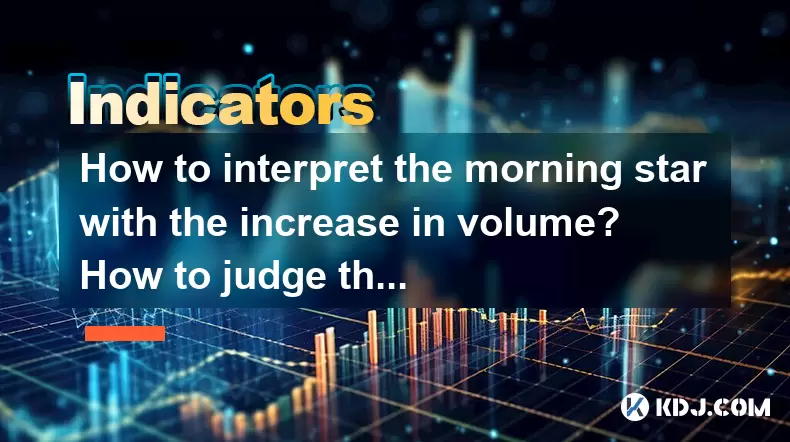
The morning star pattern is a bullish reversal pattern that can signal a potential change in market sentiment from bearish to bullish. When this pattern occurs with an increase in volume, it can provide traders with additional confidence in the potential for a reversal. In this article, we will explore how to interpret the morning star pattern when accompanied by an increase in volume and how to judge the reliability of the bottom reversal.
Understanding the Morning Star Pattern
The morning star pattern is composed of three candles and typically appears at the end of a downtrend. The pattern consists of:
- A long bearish candle indicating the continuation of the downtrend.
- A small-bodied candle (bullish or bearish) that gaps down from the first candle, showing indecision in the market.
- A long bullish candle that gaps up from the second candle, signaling a potential reversal.
The increase in volume during the formation of the morning star pattern is crucial because it indicates stronger buying pressure, which can enhance the reliability of the pattern.
Interpreting the Morning Star with Increased Volume
When the morning star pattern is accompanied by an increase in volume, it can be interpreted as follows:
- Increased volume on the second candle: This indicates that there is significant interest in the market, and the small-bodied candle represents a period of consolidation or indecision. The volume increase suggests that traders are starting to pay attention to the potential reversal.
- Increased volume on the third candle: This is particularly important as it signifies strong buying pressure. The long bullish candle that gaps up from the second candle, combined with higher volume, strongly suggests that the downtrend may be reversing.
Steps to Identify the Morning Star with Increased Volume
To identify a morning star pattern with increased volume, follow these steps:
- Identify the downtrend: Look for a clear downtrend in the price chart.
- Spot the first candle: This should be a long bearish candle that continues the downtrend.
- Observe the second candle: This should be a small-bodied candle that gaps down from the first candle. Check the volume on this candle to see if it is higher than the average volume.
- Analyze the third candle: This should be a long bullish candle that gaps up from the second candle. The volume on this candle should be significantly higher than the average volume.
Judging the Reliability of the Bottom Reversal
To judge the reliability of the bottom reversal indicated by a morning star pattern with increased volume, consider the following factors:
- Volume confirmation: The increase in volume on the third candle is a strong indicator of a potential reversal. Higher volume means more traders are participating in the move, which increases the reliability of the pattern.
- Price action following the pattern: After the morning star pattern, monitor the price action to see if the bullish trend continues. A sustained upward move in price following the pattern increases its reliability.
- Support levels: Check if the third candle of the morning star pattern closes above a significant support level. A close above a support level adds to the reliability of the reversal.
- Market context: Consider the broader market context. If the morning star pattern occurs during a period of overall market weakness, its reliability may be lower. Conversely, if it occurs during a period of market strength, the reliability may be higher.
Additional Considerations for Reliable Reversals
In addition to the factors mentioned above, other elements can enhance the reliability of a bottom reversal signaled by a morning star pattern with increased volume:
- Previous resistance levels: If the third candle of the morning star pattern breaks through a previous resistance level, it can add to the confidence in the reversal.
- Technical indicators: Use technical indicators such as the Relative Strength Index (RSI) or Moving Average Convergence Divergence (MACD) to confirm the reversal. For example, if the RSI moves out of the oversold territory as the morning star pattern forms, it can increase the reliability of the reversal.
- Candlestick patterns: Look for other bullish candlestick patterns that may form around the same time as the morning star. For example, a bullish engulfing pattern following the morning star can further confirm the reversal.
Practical Example of Identifying a Morning Star with Increased Volume
Let's walk through a practical example of identifying a morning star pattern with increased volume:
- Identify the downtrend: On a price chart, you notice a clear downtrend over the past few weeks.
- Spot the first candle: You see a long bearish candle that continues the downtrend, closing near its low.
- Observe the second candle: The next candle is a small-bodied candle that gaps down from the first candle. You check the volume and see that it is higher than the average volume of the past few sessions.
- Analyze the third candle: The third candle is a long bullish candle that gaps up from the second candle. The volume on this candle is significantly higher than the average volume, indicating strong buying pressure.
After identifying this pattern, you would then monitor the price action following the pattern to confirm the reversal. If the price continues to move upward and breaks through a significant resistance level, the reliability of the bottom reversal would be further confirmed.
Frequently Asked Questions
Q1: Can the morning star pattern be reliable without an increase in volume?A1: While the morning star pattern can still be considered a bullish reversal signal without an increase in volume, the reliability of the pattern is significantly enhanced when accompanied by higher volume. The increase in volume provides additional confirmation of the potential reversal by indicating stronger buying pressure.
Q2: How can I differentiate between a morning star and a similar pattern like the bullish engulfing pattern?A2: The morning star pattern consists of three candles, with the second candle being a small-bodied candle that gaps down from the first candle. In contrast, the bullish engulfing pattern is a two-candle pattern where the second candle completely engulfs the body of the first candle. The morning star pattern often indicates a more gradual shift in market sentiment, while the bullish engulfing pattern suggests a more immediate and forceful reversal.
Q3: Are there any other technical indicators that can be used to confirm a morning star pattern?A3: Yes, several technical indicators can be used to confirm a morning star pattern. For instance, the Moving Average Convergence Divergence (MACD) can be used to confirm bullish momentum. If the MACD line crosses above the signal line as the morning star pattern forms, it can add to the confidence in the reversal. Similarly, the Relative Strength Index (RSI) moving out of oversold territory can also provide confirmation.
Q4: Is it possible for a morning star pattern to fail, and what are the signs of such a failure?A4: Yes, a morning star pattern can fail, and traders should be aware of the signs. A failure can be indicated by the price failing to sustain the upward move following the pattern. If the price quickly reverses back below the low of the third candle or the support level, it may suggest that the bullish reversal was not successful. Additionally, a decrease in volume following the pattern can also be a sign of failure, as it indicates a lack of continued buying interest.
Disclaimer:info@kdj.com
The information provided is not trading advice. kdj.com does not assume any responsibility for any investments made based on the information provided in this article. Cryptocurrencies are highly volatile and it is highly recommended that you invest with caution after thorough research!
If you believe that the content used on this website infringes your copyright, please contact us immediately (info@kdj.com) and we will delete it promptly.
- XRP Price Prediction: Weekend Rollercoaster or Rally?
- 2025-10-12 08:45:16
- Bittensor (TAO): Super Bullish Signals Point to Potential 2x Rally
- 2025-10-11 10:25:12
- Silver Price Correction: Navigating the Dip & Identifying Key SEO Keywords
- 2025-10-11 10:25:12
- Decoding Crypto Trends: Bittensor's Bull Run, Cardano's Dip, and LivLive's Presale Buzz in 'Uptober 2025'
- 2025-10-12 08:45:16
- MoonBull: The Crypto Meme Coin Promising 1000x Gains?
- 2025-10-11 10:30:01
- Crypto Payroll Revolution: Stablecoins, Altcoins, and the Future of Salary Payments
- 2025-10-11 10:30:01
Related knowledge
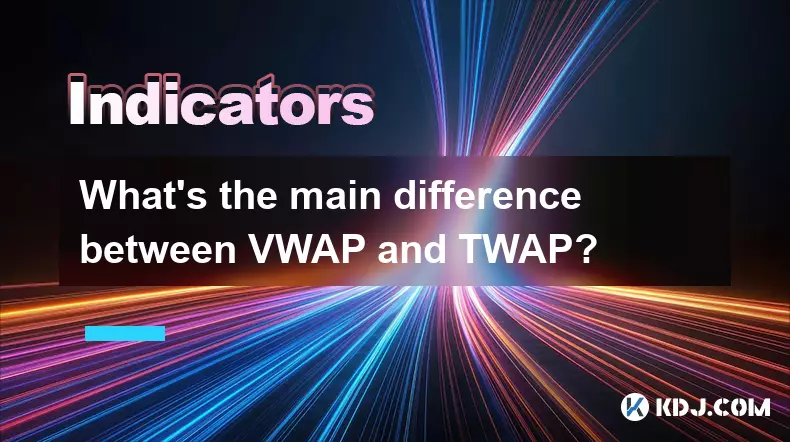
What's the main difference between VWAP and TWAP?
Oct 12,2025 at 11:54am
Understanding VWAP and Its Role in Crypto Trading1. Volume Weighted Average Price (VWAP) is a trading benchmark that calculates the average price of a...
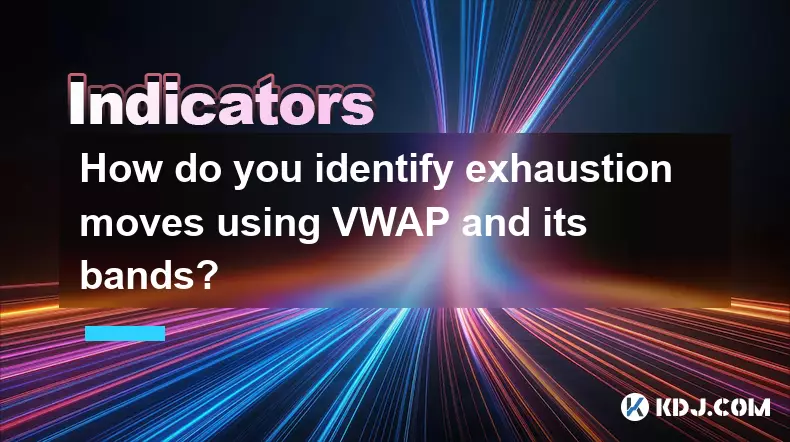
How do you identify exhaustion moves using VWAP and its bands?
Oct 12,2025 at 08:00am
Understanding the Role of Decentralized Exchanges in Crypto Trading1. Decentralized exchanges (DEXs) operate without a central authority, allowing use...
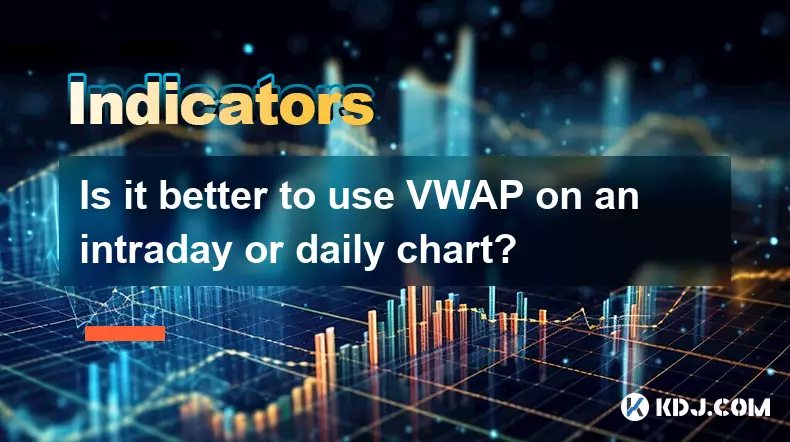
Is it better to use VWAP on an intraday or daily chart?
Oct 15,2025 at 02:01am
Intraday Trading and the Role of VWAP1. Intraday traders frequently rely on VWAP (Volume Weighted Average Price) as a dynamic benchmark for assessing ...
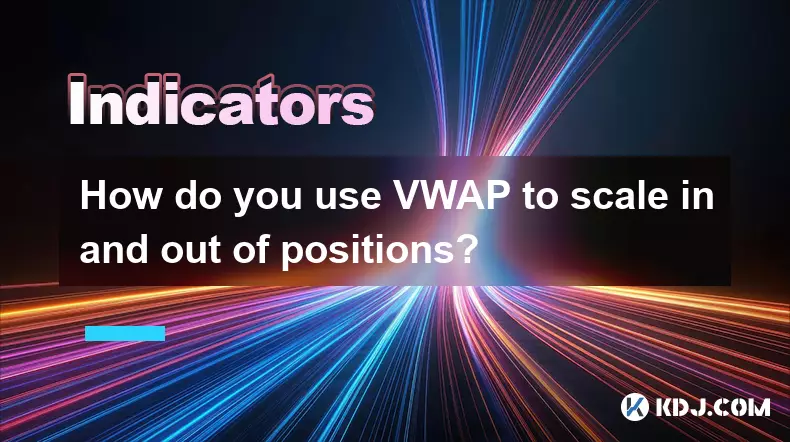
How do you use VWAP to scale in and out of positions?
Oct 14,2025 at 02:19am
Understanding VWAP as a Dynamic Benchmark1. The Volume Weighted Average Price (VWAP) is not just an indicator—it functions as a dynamic benchmark that...
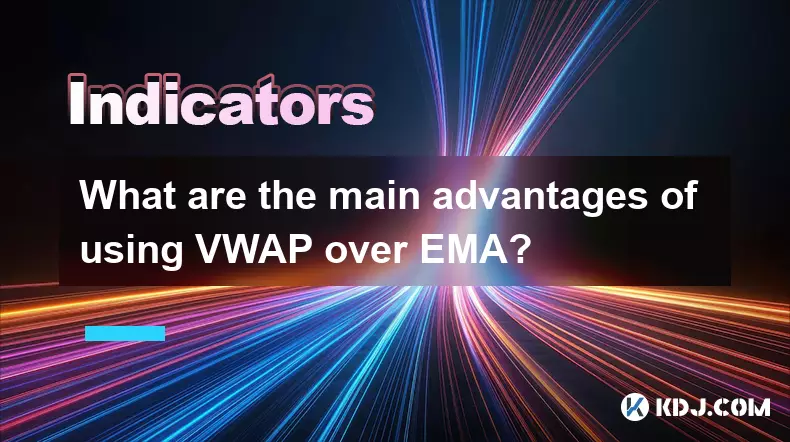
What are the main advantages of using VWAP over EMA?
Oct 11,2025 at 02:18am
Main Advantages of Using VWAP Over EMA1. Volume-Weighted Average Price (VWAP) incorporates trading volume into its calculation, offering a more accura...
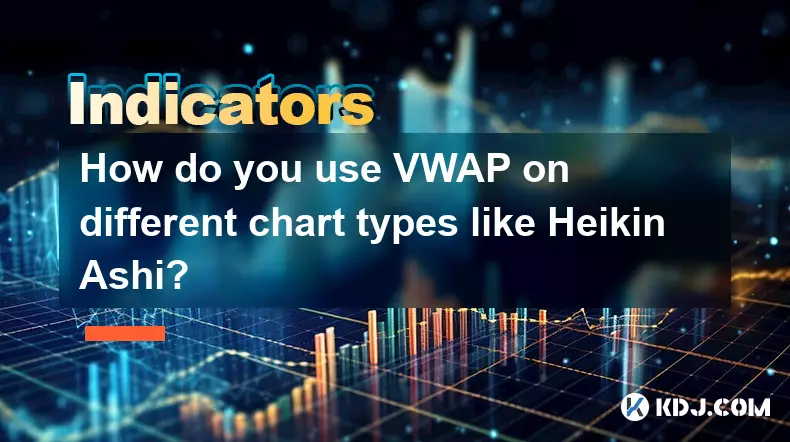
How do you use VWAP on different chart types like Heikin Ashi?
Oct 11,2025 at 05:01pm
Understanding VWAP in the Context of Heikin Ashi Charts1. The Volume Weighted Average Price (VWAP) is a powerful analytical tool commonly used by trad...

What's the main difference between VWAP and TWAP?
Oct 12,2025 at 11:54am
Understanding VWAP and Its Role in Crypto Trading1. Volume Weighted Average Price (VWAP) is a trading benchmark that calculates the average price of a...

How do you identify exhaustion moves using VWAP and its bands?
Oct 12,2025 at 08:00am
Understanding the Role of Decentralized Exchanges in Crypto Trading1. Decentralized exchanges (DEXs) operate without a central authority, allowing use...

Is it better to use VWAP on an intraday or daily chart?
Oct 15,2025 at 02:01am
Intraday Trading and the Role of VWAP1. Intraday traders frequently rely on VWAP (Volume Weighted Average Price) as a dynamic benchmark for assessing ...

How do you use VWAP to scale in and out of positions?
Oct 14,2025 at 02:19am
Understanding VWAP as a Dynamic Benchmark1. The Volume Weighted Average Price (VWAP) is not just an indicator—it functions as a dynamic benchmark that...

What are the main advantages of using VWAP over EMA?
Oct 11,2025 at 02:18am
Main Advantages of Using VWAP Over EMA1. Volume-Weighted Average Price (VWAP) incorporates trading volume into its calculation, offering a more accura...

How do you use VWAP on different chart types like Heikin Ashi?
Oct 11,2025 at 05:01pm
Understanding VWAP in the Context of Heikin Ashi Charts1. The Volume Weighted Average Price (VWAP) is a powerful analytical tool commonly used by trad...
See all articles





















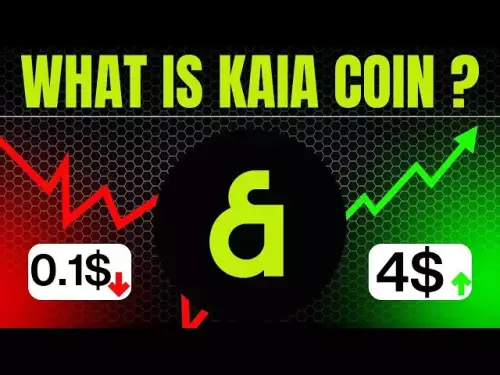


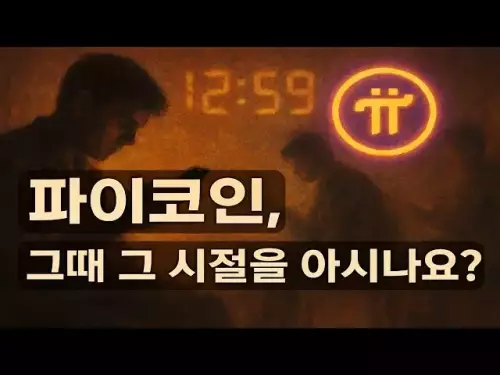

![Staking ATH: How To Stake $ATH in October 2025 with 523% APY — [Step-By-Step Guide] Staking ATH: How To Stake $ATH in October 2025 with 523% APY — [Step-By-Step Guide]](/uploads/2025/10/15/cryptocurrencies-news/videos/staking-ath-stake-ath-october-apy-stepstep-guide/68eef94d80903_image_500_375.webp)















































